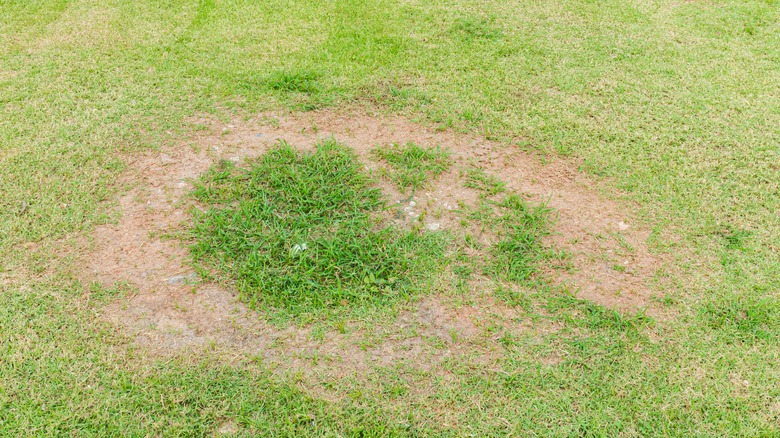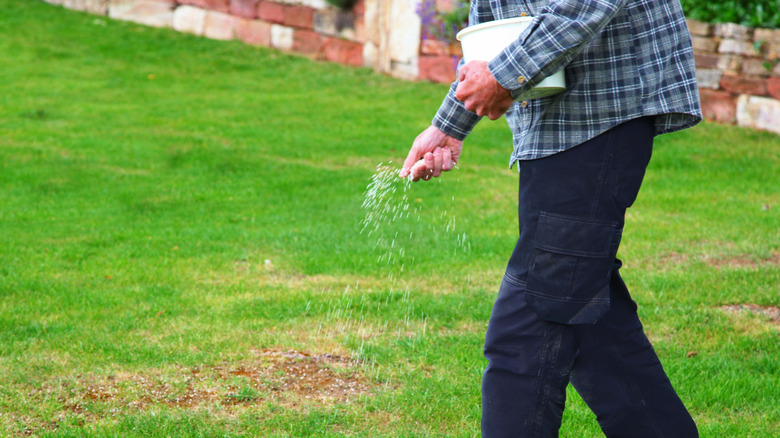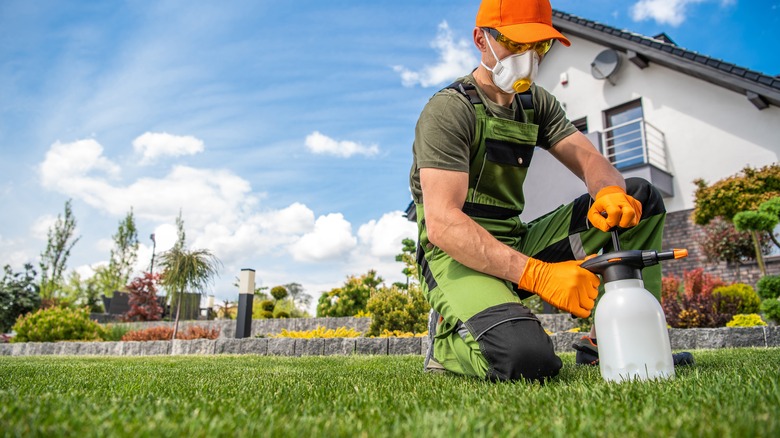How To Prevent And Treat A Necrotic Ring Spot On Your Lawn
If unsightly brown or yellow patches suddenly mar your well-maintained lawn, it's likely you're dealing with necrotic ring spot. This lawn disease, while frustrating, isn't a death sentence for your grass and is most common with Kentucky bluegrass, rough bluegrass, and fine fescue. Necrotic ring spot, a fungal disease, primarily targets the roots of grass. It's recognizable by the distinct ring-like patterns of dying grass it leaves, often on otherwise healthy-looking lawns. These rings can range from small spots to large patches, depending on the severity of the infection. This condition is more than just a cosmetic issue; it indicates a deeper problem with the health of your lawn. Understanding the life cycle of this fungus is key to managing it effectively. It often lies dormant during colder months and becomes active in warmer, moist conditions. This means that the best time for treatment and prevention is typically in the late spring or early summer, just as the fungus starts to wake up. The right treatment approach includes specific care routines and potentially using fungicides.
The fungus also thrives in conditions where your lawn is stressed — this stress can come from a variety of sources, such as soil compaction, excessive moisture, poor drainage, or improper fertilization practices. Lawns with a high nitrogen level or a dense thatch layer are particularly susceptible. The combination of these factors creates an ideal breeding ground for the necrotic ring spot fungus.
Keeping necrotic ring spot at bay: Your lawn's defense plan
To keep the necrotic ring spot out of your lawn, prevention is your best weapon here, and checking your grass often is the key. You'll need to ensure you're giving your grass the care it needs to stay strong and disease-free. First up is fertilizer. Too much of it is bad. The trick is to use a slow-release fertilizer like Nature Safe or Turf Restore. This method nourishes your lawn without overwhelming it. This way, your grass grows steadily and healthily without the weak spurts that attract diseases. Now, let's dig into aeration. If your yard is like a tightly packed suitcase, it's time to give it some breathing room. As mentioned earlier, compacted soil can stress out your grass and make it a cozy spot for fungi to thrive. Aerating your lawn once a year can work wonders. It's like giving your grass a deep breath of fresh air, letting water and nutrients get down to the roots where they're needed most. Plus, it helps break down thatch, which can be a playground for fungi.
Watering is next on the list. Overdoing it with water can create a soggy, fungus-friendly lawn. The goal is to water just enough to keep your lawn hydrated but not drenched. Think deep and infrequent watering. Aim for about 6–8 inches of water per week, and the early morning is the best time to water your lawn. This helps the water go deep into the soil and keeps the surface dry enough to discourage fungal growth.
Getting the upper hand on necrotic ring spot with fungicide
If your lawn has already fallen victim to a necrotic ring spot, it's time to bring out the big guns: fungicides. You need something specifically formulated for this type of fungus. Products like myclobutanil and fenarimol are your best bets. Now, using these fungicides isn't just a spray-and-forget-it deal. You've got to follow the instructions on the label to the letter. This means applying the right amount at the right time. And remember, it's all about precision — too much or too little, and you won't get the results you're after.
But here's the thing: While fungicides are great at tackling the immediate problem, they're not a cure-all. Keep a close eye on your lawn after treatment. This will help you figure out if you need a follow-up application. Recovery might not be instant, but with patience and consistent care, you'll see progress. In severe cases, you might even consider reseeding your lawn's affected areas, especially if the damage is extensive. Choose a grass variety that gives your lawn a fighting chance.
In short, treating necrotic ring spot is a blend of using targeted fungicides and keeping up with your lawn care game. This means regular aeration, smart watering, and balanced fertilizing. Think of it like a tag team: The fungicide deals with the current outbreak, and your lawn care routine helps prevent future invasions.



